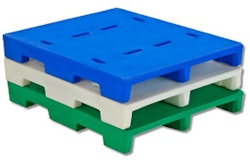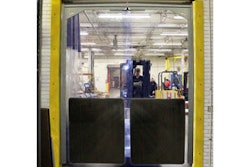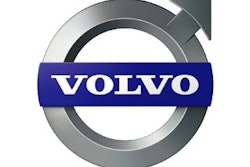MAG’s modular HMC 1250/1600 Series is engineered for high-precision, high-productivity machining of large aerospace, power generation, pump, valve, and off-road equipment parts. Striving to create a more efficient machining tool for large-scale projects, this combination of size and precision has brought needed machining accuracies and tighter part tolerances to the aerospace industry.
Though the improvements that the HMC 1600 has brought forward are vast, there are a few drawbacks, as with any engineering project. Mike Vogl, senior project engineer at MAG explains, “Due to the higher traverse rates, the axis thrust is somewhat reduced from previous machine lines. The HMC 1250 and HMC 1600 both offer 20 kN (4,500 lb) continuous cutting thrust.” Like any design situation when you give somewhere, you often have to take away somewhere else. “It is difficult to judge whether this is a competitive disadvantage,” Vogl says, as the higher traverse rates tend to be more important.
Efficient Design
Beyond its high-axis traverse rates and absolute scale feedback on all linear axes, the HMC 1600 allows for modularity of design. Vogl explains, “The HMC 1600 was developed as a family of machine components (modules) that could be configured to make the HMC 1250 and HMC 1600 machines. A number of the modules are also shared with our HBM and VTC machines. The building blocks allow us to configure the machine with a number of different travels, tooling, and headstock options.” MAG offers a 10,000 rpm fixed length spindle, a high-torque 5,000 rpm fixed length spindle with 2,100 Nm torque, two different 4,000 rpm bar spindle options (110- and 130-mm diameter), and a geared tilt, spindle head stock, which can be configured to 6,000 and 8,000 rpm speeds.
Decisions needed to be made regarding target specifications and costs for the HMC series. Sometimes these targets are in alignment with each other and the choice is simple, but other times the two are in conflict with each other. Vogl says, “high-axis traverse rate, high-axis thrust, and low cost tend to conflict with each other. We did a time study on the affect that high-axis traverse rate had on the part production rate.” Their results showed a minimal gain in part production rate after a specific speed, not to mention these speeds are often limited due to the materials being machined and the type of cutter technology. “As a result we were able to reduce the motor and drive size required to reach an optimal traverse rate, provide the thrust we needed, and not exceed our cost target.”
The HMC is a production machine capable of using a high-pressure coolant. In an effort to contain machining chips for recycling and prevent coolant spillage, the HMC was designed with a full work zone enclosure. Vogl explains, “We designed the enclosures early on in the design process, so that we could incorporate mounting surfaces and interface points between the beds and enclosure to ensure water tight seals.” This enclosure also plays a part in hose and cable routing, and was taken into consideration to ensure adequate space and ducting could reach certain areas on the machine,” says Vogl.
Striving for Perfection
With the need for accuracy in the aerospace industry, the HMC Series comes standard with linear scale feedback in the X, Y, and Z axis, and delivers 8 micron (0.0003”) positioning accuracy and 5 micron (0.0002”) repeatability.
To keep the machining process more accurate, the 1600 Series works hand-in-hand with MAG’s exclusive Z-axis thermal compensation software. The software is used to dynamically adjust the machine’s position based upon spindle temperature. Using sensors at key locations on the spindle, the length of the spindle from its fixed bearings, and an experimentally derived time constant, the software calculates the thermal growth of the spindle and compensates the Z-axis position accordingly. Vogl explains, “this feature helps put the tool at the correct axial location regardless of spindle temperature.”
Accurate machining of the major structural components and proprietary final fitting procedures to remove any minor imperfections both contribute to the accuracy of the machine linear ways. “Machine stiffness is the key to machine accuracy. Each part of the machine contributes to the overall stiffness of the machine,” Vogl explains. Using FEA analysis, MAG started with the foundation to verify that each component met a specific target stiffness value.
A Machining Machine
Utilizing a wide range of headstocks and tooling as configurable modules, the HMC 1600 Series provides a unique ability to match the machine and spindle to the type of workpiece being worked on. Using boring bars, tilt heads, and high-torque spindles, just about any material can be machined accurately and efficiently.
Accuracy and precision are vital in the aerospace field, but what makes things more challenging is the shear size of the parts. The MAG HMC 1600 manages to take these aspects into consideration, as well as the normally passed over details of machining equipment, and tweak them to finite standards. As the aerospace industry continues to grow, MAG has every intention of keeping up.























